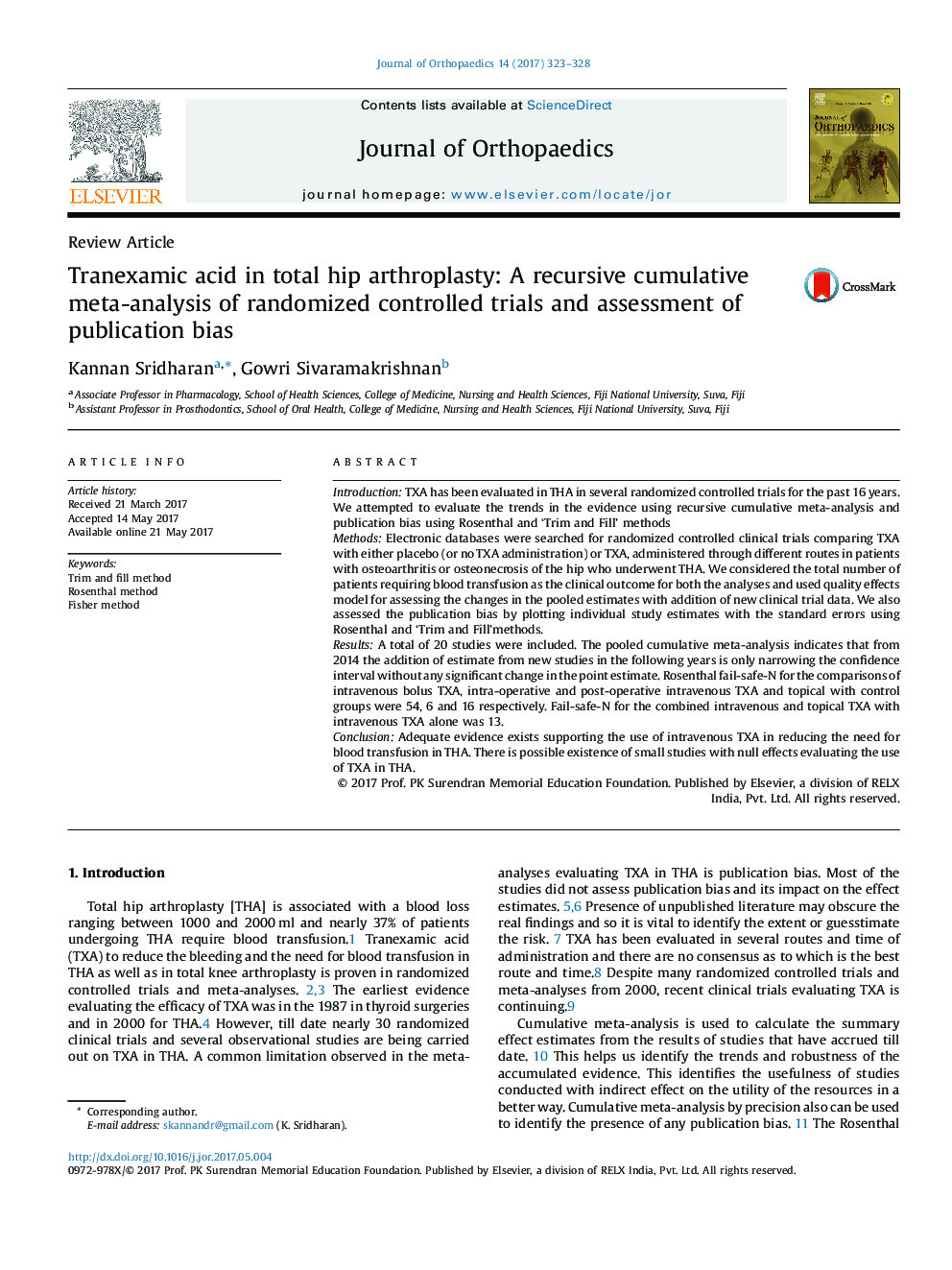| Article ID | Journal | Published Year | Pages | File Type |
|---|---|---|---|---|
| 5654125 | Journal of Orthopaedics | 2017 | 6 Pages |
IntroductionTXA has been evaluated in THA in several randomized controlled trials for the past 16 years. We attempted to evaluate the trends in the evidence using recursive cumulative meta-analysis and publication bias using Rosenthal and 'Trim and Fill' methodsMethodsElectronic databases were searched for randomized controlled clinical trials comparing TXA with either placebo (or no TXA administration) or TXA, administered through different routes in patients with osteoarthritis or osteonecrosis of the hip who underwent THA. We considered the total number of patients requiring blood transfusion as the clinical outcome for both the analyses and used quality effects model for assessing the changes in the pooled estimates with addition of new clinical trial data. We also assessed the publication bias by plotting individual study estimates with the standard errors using Rosenthal and 'Trim and Fill'methods.ResultsA total of 20 studies were included. The pooled cumulative meta-analysis indicates that from 2014 the addition of estimate from new studies in the following years is only narrowing the confidence interval without any significant change in the point estimate. Rosenthal fail-safe-N for the comparisons of intravenous bolus TXA, intra-operative and post-operative intravenous TXA and topical with control groups were 54, 6 and 16 respectively. Fail-safe-N for the combined intravenous and topical TXA with intravenous TXA alone was 13.ConclusionAdequate evidence exists supporting the use of intravenous TXA in reducing the need for blood transfusion in THA. There is possible existence of small studies with null effects evaluating the use of TXA in THA.
